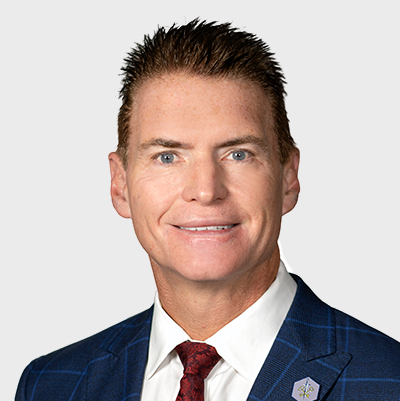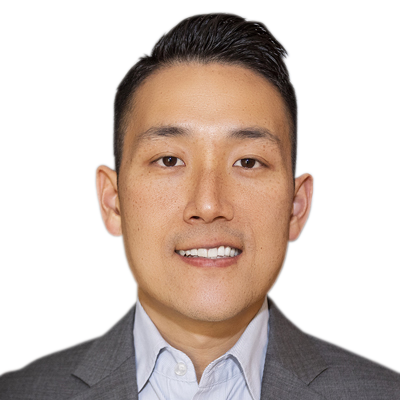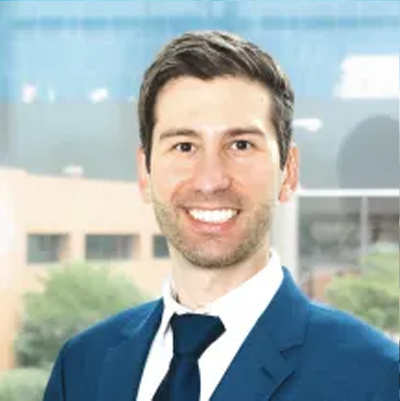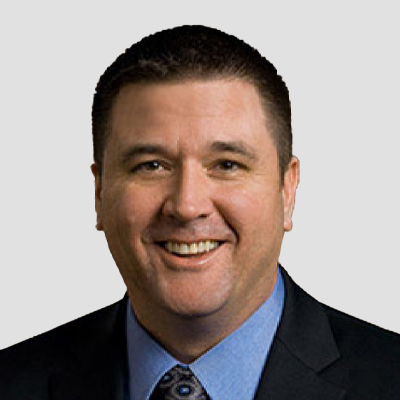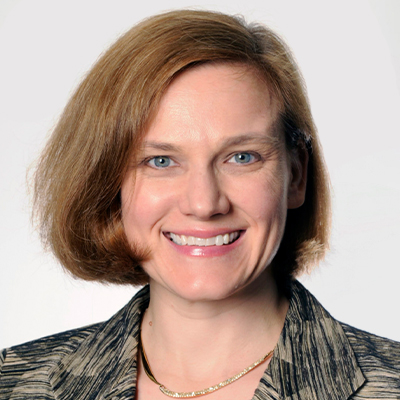INNOVATING PAIN CARE: BUILDING BRANDS, ADVANCING MEDICINE
IN THIS ISSUE:
- Chairman’s Corner
- Publications
- Young Innovators Committee
- ASPN Annual Meeting
- Fellowship Corner
- President’s Corner
Editor-in-Chief: Dr. Jordan Tate
Contributing Editor: Dr. Nikhil Verma
CHAIRMAN’S CORNER
The Brand.
What is your brand?
You may read this and think “I don’t have a brand,” but everyone involved in medicine does have a brand. The way you shape, refine, reinforce, and change your brand will have an impact on your professional career.
For the young innovator out there, searching to find your spot, I think we can give you some guidance on creating the best brand to help you be successful. In this Chairman’s Corner, it is important to give you advice on building and maintaining an optimal brand that reflects your goal. While this is a unique and tailored journey, there are some basic rules that should apply to each person reading this newsletter.
- Visualize what an ideal brand is for you going forward in your career.
- Consider the sacrifices, work, and professional demands it will take to achieve this brand in a way that will be impactful.
- Set a series of goals for creating the brand, and think about measurable endpoints to make sure you are on the journey you seek.
- Practice excellent and patient-focused medicine. This is the most important step in the brand creation.
- Create a look and culture in your practice that reflects the image you want to project. Look professional, maintain your health, and create an image that is what you want others to see as the optimal you.
- Be respectful and professional on social media. If you use social media for branding your practice, ask others for objective insight on your presence on each format. Remember what you say on a personal private account may be very different than the comments or thoughts that are patient-facing.
- If you are a researcher or writing publications, use those successes to build the brand. For example, if you have been doing research on neuromodulation, you can use that work to highlight your expertise.
- Consider changing your brand as your practice grows, evolves, and improves. A brand doesn’t have to be static; make changes that keep your brand impactful.
- If you sense your brand has gone a direction that is not what you envisioned, use your behavior, networking, research, and social media to find a new direction.
- Be nice to those around you and humble in all that you do. This will make your brand stronger and more durable.
We have used this concept in building ASPN. For example, South Beach, Miami, Florida, seems like a simple decision for our Annual Meeting. Great facilities at the Fontainebleau, amazing learning opportunities, great meeting space, terrific weather, easy access to networking, and terrific social activities. Over the past several years, we have used the meeting in this great city to launch a family of healthcare professionals and industry members who have made July at the beach a tradition to launch and plan a year of research, work, partnerships, and new innovations. I think we could all safely say that South Beach has become part of our brand.
At the same time, we have focused on Poster to Podium, Young Innovators, and a focused mentoring program to establish another brand. That being the brand of bringing up the field by bringing up others. No egos. No superiority, just a desire to enhance the field by making each other better.
The brand of ASPN is the Ohana, the Hawaiian term for family. If you are part of our family, we will embrace and work to improve you. We will lean on you, and let you lean on us, mentor you, and ask you to mentor others. Most of all, we will drive the field forward by disruption and innovation to improve patient care and access.
See y’all in Miami in July. Get your room now as we expect an amazing meeting.
PUBLICATIONS
The new year provides an opportunity to review some of the recent ASPN-led publications recently published through the Journal of Pain Research. One of the publications that is currently in review involves responsible use of the artificial intelligence (AI) application in the field of medicine. The topic is increasingly germane to the medical field with AI advancement occurring with increased speed and volatility. This brings into question concerns regarding the responsible implementation and use of AI, as well as implications to the future of diagnosis and treatment of patients.
Similarly, Giuffrida et al. recently published NEURON Guidance on Social Media for Healthcare Professionals. The authors provided a comprehensive review on ethical and legal implications for use of social media within medicine. Furthermore, they detailed appropriate use of social media, to advance both the field of interventional and surgical spine.
Wahezi et al. published survey results on Employer Perspective on Pain Fellowship Education. This study was performed by ASPN members in collaboration with several other national professional pain societies, including the AAPM, ASIPP, and NANS. The survey aimed to gather insights from employers from a diverse range of geographic locations, practice types (academic and private practice), and practice settings. Most survey respondents reported a need for additional training and experience beyond what is offered during the one-year ACGME-approved fellowship. Professionalism and basic interventional skills were identified as the highest valued attributes of pain physician candidates by potential employers. Employers rated spinal cord stimulator (SCS) trials as the most important advanced procedure for trainees to learn. Other advanced procedures such as SCS implants, PNS implants, interspinous spacers, and percutaneous procedures involving the vertebral body were also rated as either very important or somewhat important by most respondents. As a result of the survey, ASPN is presently developing their own curriculum to address the growing need for advanced procedural education and training.
In the most recent addition to the NEURON Project, Pope et al. published a comprehensive review of data on Closed-Loop Controlled Spinal Cord Stimulation (CL-SCS). Published randomized controlled trials on CL-SCS include the double-blinded EVOKE study, with publications at 12, 24, and 36 months; and the open-label AVALON study, with publication at 12 and 24 months. Additionally, there have been non-randomized prospective studies, the most recent which included a study on the immediate patient-reported and neurophysiologic treatment response post-physiologic CL-SCS. Based on available literature, the authors published a series of consensus statements on CL-SCS and provide guidance on future applications of CL-SCS as well as gaps in research that currently exist.
NEURON Projects are still presently in the works. We encourage all ASPN members to sign up for email updates for the most up-to-date publications in the Journal of Pain Research.
References:
Pope JE, Deer TR, Sayed D, Antony AB, Bhandal HS, Calodney AK, Chakravarthy K, Costandi S, Diep J, Durbhakula S, Fishman MA, Gilligan C, Goree JH, Guirguis M, Hagedorn JM, Hunter CW, Kallewaard JW, Kapural L, Lam CM, Li S, Mayrsohn B, Nijhuis H, Nikolic S, Petersen EA, Poree LR, Puri SK, Reece DE, Rosen SM, Russo MA, Shah JM, Staats PS, Verrills P, Vu CM, Levy RM, Mekhail N. The American Society of Pain and Neuroscience (ASPN) Guidelines and Consensus on the Definition, Current Evidence, Clinical Use and Future Applications for Physiologic Closed-Loop Controlled Neuromodulation in Chronic Pain: A NEURON Group Project. J Pain Res. 2025;18:531-551.
Wahezi SE, Yener U, Naeimi T, Choi H, Eshraghi Y, Pritzlaff SG, Emerick T, Hunter CW, Caparo M, Schatman ME, Ahadian F, Argoff C, Deer T, Sayed D, Day M, Abd-Elsayed A, Lo Bianco G. Employer Perspective on Pain Fellowship Education: A Survey to Understand the Current State of Pain Medicine Training. J Pain Res. 2024;17:4573-4582.
Giuffrida A, Saia-Owenby C, Andriano C, Beall D, Bailey-Classen A, Buchanan P, Budwany R, Desai MJ, Comer A, Dudas A, Tieppo Francio V, Grace W, Gill B, Grunch B, Goldblum A, Garcia RA, Lee DW, Lavender C, Lawandy M, Mandell L, Mata R, Rabii M, Patel K, Patel RG, Patel AA, Sayed D, Singh G, Strand N, Tate J, Schatman ME, Deer T. Social Media Behavior Guidelines for Healthcare Professionals: An American Society of Pain and Neuroscience NEURON Project. J Pain Res. 2024;17:3587-3599.
YOUNG INNOVATORS
Empowering the Next Generation of Pain Medicine Leaders
As the American Society of Pain and Neuroscience (ASPN) eagerly anticipates the upcoming Annual Meeting from July 17–20 in Miami, FL, we are delighted to share key updates regarding the ASPN Young Innovators (YI) Committee.
Since September 2024, the YI Committee has undergone a significant transformation in both its leadership and structure. Former committee chairs have transitioned into senior advisor roles, and we are pleased to announce the new co-chairs of the YI Committee.
I am honored to lead the YI Committee as Co-Chair, alongside my esteemed colleagues Yussr Ibrahim, Anuj Shah, and Kelsey Gustafson. Over the next three years, we promise to work hard and deliver. Our mission is to build a robust platform for the professional development, networking, leadership, and mentorship of ASPN Young Innovators.
The YI Committee is committed to fostering professional growth by creating structured pathways for career advancement, implementing a tiered mentorship program, and providing invaluable guidance on career planning, research opportunities, and clinical development. Through these initiatives, we aim to enhance educational engagement, establish a dedicated YI track for the Annual Meeting, and encourage greater participation among our Young Innovators, all with the goal of preparing them to become future leaders in interventional spine, pain, and neuroscience.
A key development in this effort is the establishment of four subcommittees, each focused on crucial areas of growth and designed to ensure robust involvement from Young Innovators:
- Education
- Research
- Mentorship/Networking
- Membership/Diversity/Outreach
Each subcommittee is led by a Leadership Council composed of passionate ASPN Young Innovators, representing a broad range of specialties and stages of professional training. Together, we will ensure that each initiative is informed by a diverse spectrum of perspectives and expertise. Additionally, each subcommittee will be supported by two esteemed faculty supervisors, ensuring alignment with the broader goals of ASPN Board of Directors.
These subcommittees will play an integral role in advancing the YI Committee’s mission to create meaningful opportunities for Young Innovators within ASPN. Looking ahead, we are particularly excited about our collaboration with the P2P (Poster to Podium) Program. This partnership aims to offer professional development opportunities for current and former P2P alumni, providing them with the tools to refine their leadership skills. Together, we seek to amplify the reach of the YI Committee’s initiatives and optimize recruitment efforts across the ASPN community.
As we embark on this exciting journey over the next three years, we are eager to work closely with the ASPN Board of Directors and all ASPN members to advance these critical initiatives. Together, we will continue to elevate the role of Young Innovators and help shape the next generation of leaders in pain, spine, and neuroscience.
Thank you for your ongoing support.
ANNUAL ASPN MEETING
Join the 2025 ASPN Annual Meeting—Advancing Pain and Neuroscience Together
As the weather warms and winter holidays are in the rearview mirror, we are reminded and encouraged of the coming spring and summer. Even more, another exciting opportunity to collaborate is on the horizon in July with the 2025 American Society of Pain and Neuroscience (ASPN) Annual Meeting.
For those of us who attended, the 2024 Annual Meeting was a smashing success. “Building Bridges to Better Healthcare” was our mantra, and a multifaceted program certainly delivered the promise of this theme.
With the theme, “Embracing Disruption, Driving Innovation,” ASPN is excited to welcome clinicians, researchers, and industry leaders to the 2025 ASPN Annual Meeting on July 17–20, once again a premier gathering dedicated to innovation, collaboration, and education in pain management and neuroscience.
This highly anticipated event will take place once again at the Fontainebleau, and it will bring together top experts to discuss cutting-edge treatments, breakthrough research, and the future of pain medicine. Attendees will have access to world-class keynote speakers, hands-on workshops, and the latest advancements in interventional pain techniques, neuromodulation, and regenerative medicine.
Beyond the educational sessions, the ASPN Annual Meeting fosters invaluable networking opportunities, allowing attendees to connect with thought leaders, industry partners, and colleagues who share a passion for improving patient care. Whether you’re a seasoned practitioner or a rising star in the field, this conference offers unparalleled insights and inspiration.
Don’t miss this opportunity to be part of the next wave of innovation in pain and neuroscience. Register today and join us in shaping the future of pain management!
FELLOWSHIP CORNER
Reflecting on my journey from a PM&R resident to now an interventional pain fellow, my involvement within the ASPN society has been essential for my professional growth and success.
The ASPN society makes it a priority to support and inspire the next generation of interventional pain physicians to be tremendous leaders in our field. Opportunities such as the Poster to Podium program, cadaver lab courses, mentorship and networking initiatives, fellows webinars, and research collaborations within the society have been invaluable to my success.
Our last Annual Meeting in Miami was an impressive event that brought together an array of experts from various fields, including industry professionals, private equity firms, legal experts, neurosurgeons, neurologists, and specialists in interventional radiology. This diverse gathering facilitated a rich exchange of ideas and fostered collaborations across specialties, industries, and disciplines, paving the way for innovative solutions and interdisciplinary advancements.
The Pain Summit in Nashville emphasized fellows’ education with hands-on cadaver labs and round table discussions, showcasing ASPN’s commitment to sharing cutting-edge data. Our chair of diversity, Dr. Jordan Tate, organized a reception highlighting the importance of diversification across specialties, ethnic backgrounds, and genders, with strong support from female industry leaders.
The ASPN 2025 Annual Meeting returns to Miami, FL, and promises to be even bigger and better. The theme this year focuses on driving innovation. This year’s event will feature an expanded program with more events designed to engage participants and provide deeper insights into the latest advancements in the field. Attendees can look forward to additional workshops, panel discussions, and networking opportunities, all aimed at furthering knowledge and collaboration among professionals.
ISPN 2025 will take place in London, bringing together global leaders in pain management. The International Society of Pain and Neuroscience aims to promote scientific advancement by collaborating with a diverse group of stakeholders, including physicians, scientists, and other organizations. The event focuses on improving patient outcomes, enhancing education, and advancing research within an inclusive and supportive community.
I am eager to advance the field of pain medicine by collaborating with my mentors and mentees to foster innovation and growth. As I transition to an attending role after my fellowship, I am committed to giving back and supporting others in their careers. The future of pain medicine is bright, and I am excited for what our future holds!
PRESIDENT’S CORNER
The glitz and glamour of awards season, from the Grammys to the Oscars, may seem distant from our daily lives. Yet, these spectacles reflect a fundamental human need: to acknowledge and celebrate achievement.
While we celebrate others, awards season also offers a valuable lesson in self-recognition. Just as these events highlight extraordinary feats, they subtly encourage us to take stock of our own accomplishments, both big and small. We often focus on future goals, but acknowledging our progress—even in incremental steps—is crucial for maintaining motivation and self-esteem.
A 2020 study found that intrinsic motivation is better maintained for those who track incremental progress. We can expect this to be especially true in demanding professions like surgery and interventional pain.
Think about the last time you successfully completed a complex, involved procedure. While the patient’s well-being is the ultimate reward, you also deserve to acknowledge the skill, focus, and years of training that you contributed to the positive outcome. Did you pioneer a new technique? Navigate unexpected complications with composure? Simply execute a challenging procedure flawlessly? These are all worthy of recognition, even if the accomplishment isn’t broadcast on national television.
Perhaps it’s a quiet moment of reflection, a shared word with colleagues, or simply the satisfaction of a job well done. These small acts of self-acknowledgment fuel future success and contribute to our confidence in the operating room and beyond.
This principle extends to appreciating the accomplishments of those around us. Imagine our clinical teams: the dedicated X-ray technologist who always gets the views just right, the scrub tech who anticipates the next instrument you will need, the anesthesiologist who maintains the patient’s vital signs, the resident or fellow who diligently assists with every step. Add to this our teams in the office who ensure smooth, compassionate patient experiences.
A simple “thank you” or a specific acknowledgment of their contribution can have a profound impact. “Your quick thinking during that unexpected moment saved the day,” or “I really appreciate your precision in prepping the instruments,” can boost morale and foster a strong team dynamic. These small acts of recognition mirror the grand gestures of awards ceremonies, creating a positive and supportive environment where everyone feels valued.
Just as awards celebrate extraordinary achievements, we can recognize the everyday contributions that make our workplaces and communities thrive. Perhaps a seasoned clinician mentors a junior doctor, sharing their expertise and fostering the next generation of medical professionals. Or a hospital administrator streamlines a process, improving patient care and efficiency. These actions, while not always glamorous, are essential for the smooth functioning of any organization.
By acknowledging the value of others, and by extension, our own value, we not only make them feel seen and appreciated but also contribute to a more supportive and harmonious world. Recognizing our own progress empowers us to celebrate the successes of others genuinely. Appreciation, both for ourselves and others, helps make our world a better place through small, positive actions.
This appreciation extends to my colleagues and friends at ASPN. I am honored to serve as your president. I and our ASPN Board are witnessing the inspiring efforts you contribute to making ASPN a singularly excellent society. From the dedicated volunteers on our committees to the faculty participants in our meetings and webinars, and the contributors to new programs, your collective dedication is invaluable.
I would be remiss not to specifically acknowledge VP of Social Media, Anthony Giuffrida, who leads our communications team, VP of Regulatory/Advocacy, Hemant Kalia, who has been instrumental in crafting strategy to maintain patient access to pain procedures, and our Clinical Affairs VPs, Kas Amirdelfan and David Lee, whose year-round efforts ensure the Annual Meeting programs are innovative and educational. Their commitment, and that of so many others, is truly appreciated.
Let us continue to celebrate both our individual and collective achievements, fostering a culture of recognition that strengthens our community and inspires us all. For it is in acknowledging the value of every contribution, big or small, that we truly elevate ourselves and the work we do.
